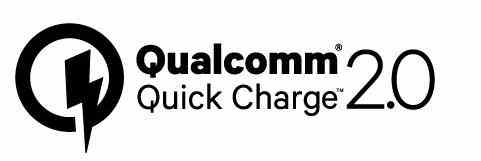Smartphones are common ground and the battery life of these devices is often under scrutiny. Despite the advancements in mobile device hardware and software, battery technology has unfortunately not been drastically improved. In other words, the days of week-long battery life is still a distant dream. However, how these modern phone batteries receive power has changed for the good. Right from wireless charging to quick or rapid charging capabilities, there is some good news after all. Today I will cover the basics of QC and the other fast charging methods
Quick Charging
Also called turbo charging, adaptive fast charging and QC rapid charging. Quick Charge (QC) is a Qualcomm-licensed technology. It’s a marketing phrase that signifies the power managing circuitry capabilities of a wall charger and smartphone. Basically, the technology can charge batteries faster without damaging the innards. Both the phone, charger and cable must be compatible to enable quick charging.
Though the technology is designed to work on Snapdragon chipsets, Qualcomm has lent the technology to other chipset devices, such as Zenphone (Intel) and Exynos (Samsung).
During quick charging, tremendous power gets dumped into the mobile device battery by utilizing various multi-voltage charging stages. This excessive power transfer subsides when the device charges up to in the 60-70 percent range, this keeps the battery healthy and prevents damage. The actual saturation point (the point where the battery needs to be slowly charged) varies with the device’s power management configuration and battery spec.
QC 1.0, QC 2.0 and QC 3.0

There are three quick charging generations:
QC 1.0 – Devices with QC 1.0 compatibility were first released in 2013. Devices such as the Galaxy Note 3, Galaxy S5, Nexus 5, Moto X (1st generation), etc. have QC 1.0 capabilities.
QC 2.0 – The next generation of quick charging, is found in the more recent smartphone flagships, such as Galaxy S6, HTC One M8, and M9, LG G4, etc. For Quick Charge technology to work, you’ll require a QC-certified adapter, a reliable cable, and a compatible device.
QC 3.0 – Ads step-less multi-voltage charging so adapts its voltage to deliver a faster charge. QC 3 voltage varies from 3-20V and delivers faster and more economical charging when compared to QC2.
Reverse compatibility
QC 3/2.0 chargers can be used to charge older devices with QC 1.0 speeds, ensuring backward compatibility.
Don’t forget the cable
Often, people talk about the device and power adapter but leave out the charging cable from the rapid charging discussion. The right cable is equally important. Flimsy cables or cables that aren’t thick enough may cause power-loss or quick charge deficiencies. See our charging cable article for more about this.
Difference between QC 1.0 and QC 2.0
- Speed difference: Quite naturally, QC 1.0 isn’t as fast as QC 2.0. According to Qualcomm, QC 2.0 charges devices at least 50 percent faster than QC 1.0. In fact, when standard charging, QC 1.0 and QC 2.0 were subjected to an official 30-minute charge test – traditional charging, QC 1.0 and QC 2.0 charged up identical devices by up to 12 percent, 30 percent, and 60 percent, respectively.
- Voltage variation:
- QC 1.0 supports up to 2A and operates on 5V.
- QC 2.0 works on a multi-voltage charging system offering 5V, 9V and 12V up to 3A. This multistage voltage means when your device battery is really low it charges with 12V, this allows for a really rapid charge, then as the charge gets highest it slowly kicks back the V until you reach normal QC 1.0 voltages and speeds.
With both the fast charging technologies, the charging speeds decrease when inching closer to the 100 percent mark. This is primarily to preserve the battery’s integrity.
Difference between QC 2.0 and QC 3.0
QC 3.0 builds on QC 2.0’s voltage variation, but instead of only 3 voltages, it can vary to any voltage between 3V and 20V. It is around 15% faster than QC2.

Need a fast charger?
We have a great range of smart chargers on our BlitzWolf page. Have a browse on the product page for some good deals on fast charging solutions for both your car and home.







